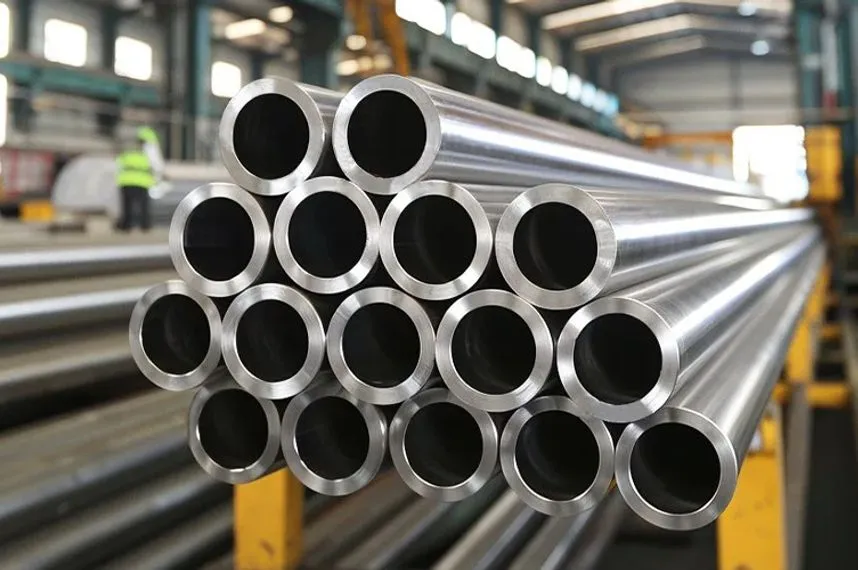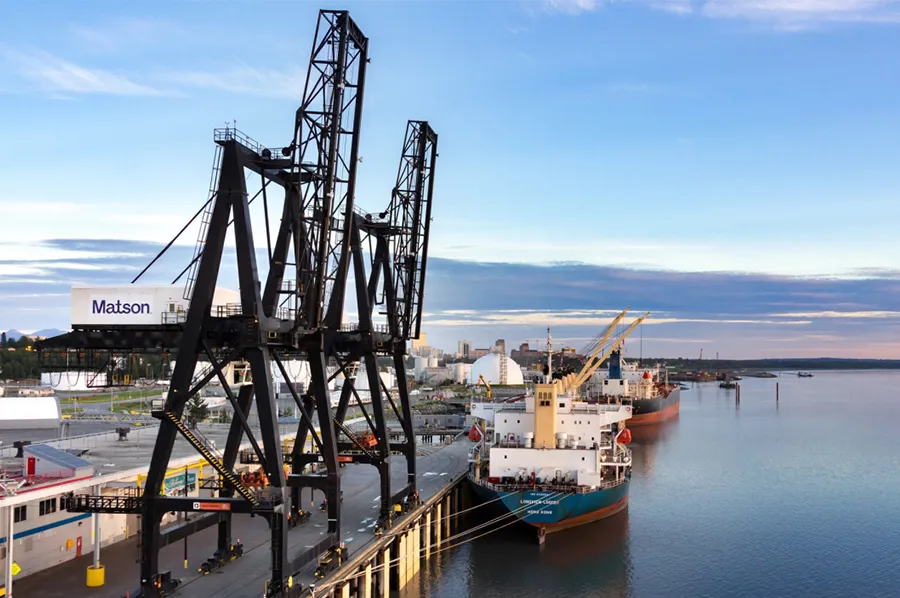Selecting the wrong type of stainless steel pipe can cost you time, money, and even a project’s success. Many buyers are confused by the variety of stainless steel grades, wall thickness options, and corrosion resistance differences among seamless stainless pipes. This guide to stainless steel seamless pipe grades explains the most common grades, industry standards, and key selection tips to help you buy with confidence.
Stainless steel seamless pipes come in a wide range of stainless steel grades—including austenitic stainless steel, duplex stainless, and ferritic stainless. Each type of stainless steel offers unique advantages for corrosion resistance, strength, and wall thickness options. Choosing the right grade ensures your piping system meets both technical and economic requirements.
A stainless steel seamless pipe is produced from a solid billet, pierced and hot-rolled or cold-drawn into a round, hollow tube—without any welded seam. This process gives seamless stainless pipes consistent wall thickness and mechanical properties throughout their length.
Key Features:
| Pipe Feature | Seamless Stainless Pipe | Welded Pipe |
|---|---|---|
| Weld Seam | None | Yes |
| Typical Wall Thickness | SCH5–SCH160+ | SCH5–SCH40 |
| Common Grades | 304, 316, duplex, ferritic | 304, 316, ferritic |
| Pressure Rating | Higher | Moderate |
| Corrosion Resistance | Excellent | Very good |
Seamless pipes are widely used in power generation, oil and gas, and food processing because they offer high corrosion resistance, uniform wall thickness, and outstanding mechanical performance.
For example, heat exchangers in chemical plants rely on stainless steel seamless pipes with grades like 316 or super duplex for their unique properties and high resistance to chloride attack.
Choosing the right grade is crucial for applications that require both strength and hygiene, such as in food and beverage pipelines.

Seamless stainless steel pipe cross-section
Selecting the right type of stainless steel is essential to meet your project’s requirements. There are many stainless steel grades, each offering a unique balance of corrosion resistance, strength, weldability, and cost.
A stainless steel grade is a standard that defines the alloy composition (mainly chromium, nickel, sometimes molybdenum, and other elements) and sets minimum mechanical properties, chemical composition, and corrosion resistance levels. International standards, such as ASTM A312, classify seamless stainless steel pipes by these grades.
The most common types of stainless steel used for seamless pipes include:
The following table summarizes the most common grades and their characteristics. These are widely used for seamless stainless pipes in industries ranging from food processing to power generation and chemical processing.
| Common Grades | Type of Stainless Steel | Key Alloy Elements | Corrosion Resistance | Wall Thickness Range | Typical Applications |
|---|---|---|---|---|---|
| 304 | Austenitic | Cr, Ni | Good | SCH10–SCH160 | Food, water, general piping |
| 316 | Austenitic | Cr, Ni, Mo | Excellent | SCH10–SCH80 | Marine, chemical, pharma |
| 321 | Austenitic (Ti-stabilized) | Cr, Ni, Ti | High | SCH10–SCH80 | High temp, welded piping |
| 310 | Austenitic | Cr, Ni | Very high | Custom | High temp, heat exchangers |
| 2205 | Duplex | Cr, Ni, Mo, N | Superior | SCH10–SCH80 | Oil & gas, marine, power |
| 430 | Ferritic | Cr | Moderate | SCH10–SCH40 | Appliances, exhaust, arch |
Note: Pipes are available in various wall thicknesses (schedules), and each grade offers different corrosion resistance and strength.
Austenitic stainless steel is by far the most widely used type of stainless steel seamless pipe, prized for its outstanding corrosion resistance, ductility, and versatility.
Why so widely used?
Austenitic stainless grades combine high corrosion resistance, strength, and formability, making them ideal for most industrial needs.
Selecting the appropriate wall thickness is critical for system reliability, pressure integrity, and safety. Wall thickness, often referred to as “schedule” (e.g., SCH10, SCH40, SCH80, SCH160), determines how much pressure a seamless stainless pipe can safely handle.
Example:
In chemical processing, a 316 seamless stainless pipe with a thicker wall (SCH80) provides both superior corrosion resistance and the strength to handle caustic fluids under high pressure.
Table: Standard Wall Thickness (Schedule) Options
| Schedule | Typical Use | Compatible Grades |
|---|---|---|
| SCH10 | Low/medium pressure, drainage | 304, 316, duplex, 430 |
| SCH40 | General process piping | 304, 316, 321, duplex |
| SCH80 | High pressure/critical fluid | 316, 310, duplex, super duplex |
| SCH160+ | Very high pressure, specialty systems | Duplex, super duplex |
Tip: Always match wall thickness to the pipe’s application and required safety margin. For austenitic and duplex stainless, standard wall thickness options cover most industrial requirements.
Duplex stainless is a hybrid type of stainless steel that combines features of austenitic and ferritic grades. It is increasingly chosen for challenging environments where high strength and corrosion resistance are both essential.
Why choose duplex stainless?
Its unique microstructure and alloy content make it an ideal choice for environments too demanding for austenitic or ferritic grades alone.

Duplex stainless steel seamless pipe in offshore oil platform application
Corrosion resistance is often the deciding factor when selecting among different stainless steel grades for seamless pipe. Not all types of stainless steel offer the same performance in corrosive or high-chloride environments.
Key Takeaway:
“Corrosion resistance depends not only on the type of stainless steel, but also on wall thickness, surface finish, and operating conditions. For long-term reliability, always choose the right grade for the fluid or gas being transported.”
The choice between seamless stainless and welded pipe is driven by pressure rating, corrosion risk, and project standards.
| Property | Seamless Stainless | Welded Pipe |
|---|---|---|
| Weld seam | None | Present |
| Pressure rating | High | Moderate |
| Typical wall thickness | SCH5–SCH160+ | SCH5–SCH40 |
| Common grades | 304, 316, duplex, ferritic | 304, 316, ferritic |
Seamless stainless steel pipes are widely used across a range of industries, owing to their superior wall thickness uniformity, corrosion resistance, and mechanical reliability.
Why so widely used?
No other type of pipe offers the same blend of corrosion resistance, strength, and versatility as seamless stainless steel pipe.
All our pipes are manufactured using advanced extrusion and cold drawing techniques, ensuring the quality of stainless steel meets or exceeds ASTM and EN standards. Each pipe is available in various wall thicknesses and grades, with strict control over chromium content and nickel content for optimum mechanical properties and resistance to corrosion.

Industrial application of seamless stainless pipes in power plant
Our factory supplies not only traditional pipes, but also stainless steel tubes, stainless steel tubing, and a full selection of ss seamless pipes to global clients. Every product line can be delivered as ASTM a312 stainless steel seamless or a312 stainless steel seamless pipe to meet the highest international standards.
For pressure-critical lines, we recommend ss seamless and seamless steel pipe. For less demanding applications or where cost is key, welded stainless steel is a solid option.
| Product | Typical Grade | Main Property | Application |
|---|---|---|---|
| Stainless steel tubes | 316, 304, duplex, ferritic | Corrosion resistance | Heat exchangers, process lines |
| SS seamless pipes | 304, 316, a312, ferritic | No weld seam, high strength | Oil, gas, chemical, food |
| Stainless steel tubing | 316, martensitic, duplex | Precision, tight tolerance | Instrumentation, pharma |
| Welded stainless steel | 304, ferritic, martensitic | Cost-effective, flexible size | Construction, water |
What are the most common grades of stainless steel seamless pipe?
The most common grades include 304, 316, 321, 310, duplex stainless (2205), and ferritic stainless (430). Austenitic stainless steel is the industry’s most widely used type due to its excellent corrosion resistance and weldability.
What type of stainless steel is best for marine or chemical processing?
For marine and chemical processing, 316 stainless steel and duplex stainless are preferred. These types provide superior corrosion resistance, especially against chlorides and acidic solutions.
How do I select the right wall thickness for my seamless stainless pipe?
Wall thickness depends on the pipe’s intended pressure, temperature, and safety margin. Standard schedules (e.g., SCH10, SCH40, SCH80) are available in all major stainless steel grades. Always consult with your supplier to ensure the pipe’s wall thickness matches your application.
What makes austenitic stainless steel so widely used in industry?
Austenitic stainless steel offers high ductility, excellent corrosion resistance, and easy fabrication. It is the first choice for piping in food, beverage, chemical, and pharmaceutical industries. It’s also non-magnetic and remains tough at both high and low temperatures.
How does corrosion resistance differ among grades?
Corrosion resistance is highest in 316 and duplex stainless grades, followed by 304. Ferritic stainless provides moderate protection and is best for non-critical or decorative applications. Always match the corrosion resistance of the grade to the chemicals and environment it will face.
Are seamless stainless pipes available in both metric and inch sizes?
Yes, seamless stainless pipes are available in a wide range of international standards, including both metric and inch-based dimensions. This includes a full range of wall thicknesses and compatible stainless steel pipe fittings.
What are pipe fittings and are they available in all stainless steel grades?
Pipe fittings—such as elbows, tees, reducers, and flanges—are available in all standard stainless steel grades (austenitic, duplex, ferritic) and are engineered to match both wall thickness and type of stainless steel pipe used in your system.
What is an ASTM a312 stainless steel seamless pipe?
ASTM A312 is a global standard for austenitic stainless steel seamless pipe and welded pipe. Pipes marked as ASTM a312 stainless steel seamless meet strict criteria for wall thickness, mechanical properties, and corrosion resistance.
What are ss seamless pipes used for?
SS seamless pipes are used in industries requiring the highest purity, pressure integrity, and corrosion resistance—such as food processing, power generation, and chemical processing.
How are stainless steel tubes different from pipes?
Stainless steel tubes and stainless steel tubing are typically used in heat exchangers or as mechanical supports, often with stricter tolerance and finish requirements than pipes.
Do you offer welded stainless steel and martensitic stainless products?
Yes. For moderate environments, we supply welded stainless steel pipes and martensitic stainless for wear-resistant or specialty needs.
What makes steel seamless pipes widely used across industries?
Steel seamless pipes are widely used because they combine excellent corrosion resistance with uniform wall thickness and no weld seam, making them suitable for critical processes in chemical, power, and food processing sectors.
How do I select the right grade for my project?
Consider the mechanical properties needed, the applications that require specific corrosion or wear resistance, and always check if the pipes are available in different grades to match your requirements.
What are some unique properties of martensitic stainless?
Martensitic stainless offers high wear resistance and good mechanical strength, making it ideal for shafts, valves, and tools where both hardness and moderate corrosion resistance are needed.
Ready to find the right grade of seamless stainless steel pipe for your project?
Our factory ensures every order of steel seamless pipes are available in the right grade, wall thickness, and length to meet your needs—whether for seamless and welded systems, heat exchangers, or specialty lines. Each grade has unique properties, and all pipes are suitable for international standards in food, oil, power, and more.
Contact us for expert technical advice, full certifications, and fast worldwide delivery on all standard and custom wall thickness options!